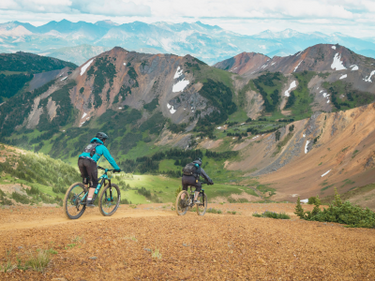How to Choose Food for the Trail
If you browse the aisles of any supermarket, REI, or sports nutrition stores, you’re likely to find a wide array of trail snacks ranging from stroopwaffels to freeze dried spaghetti. And unless you’re a seasoned pro, it can be difficult to decide what exactly you need. In this blog, we’re going to break down what to look for through 5 tips so that you can be well prepared for fueling yourself on your next adventure!
Tip #1: Duration
The biggest thing to consider when choosing food is DURATION. Are you going on a multiday trip? If yes, then you’re going to need to consider weight, volume in a pack, nutrient density, and durability (aka, things that can withstand moisture, won’t expire soon, being accidentally squashed, etc.). But if you’re going out on a day hike, you’ve got a lot more options and can have a bit more fun with the food you bring.
Tip #2: Macronutrients/Calories
The next thing you should consider is the macronutrient (protein/carbs/fat) profile. If you’re going out hiking, while you’re burning calories (estimated between 300-500/hour depending on weight), your heart isn’t really spiking into the anaerobic aka “I need sugar NOW” zone. In fact, for the majority of most hikes your heart will stay in zones 1-3 which is mostly fat being used for fuel, with some carbs tossed in. With this in mind, I choose to opt for snacks that are mostly protein and fat for lasting, steady energy with some carbs sprinkled in for any immediate energy needs. While you may think carbohydrates are king, the body can actually convert non-carbohydrate sources into carbohydrates through a process called gluconeogenesis. Pretty cool, huh? Bet you didn’t know your body could do that! The protein and the fat together will provide lasting energy and greater satiety vs giving you the peaks and valleys of energy that carbohydrates give.
But every person is different, and it takes experimenting to know what works best for your body. If you want to go super nerd, you can actually take an active metabolic test to determine what calories you need per activity at X heart rate. This makes it so you don’t over or under eat, but can hit that sweet spot every single time you go out!
Tip #3: Frequency
There’s nothing worse than having an energy crash, or a “bonk,” on the trail. This is when your blood sugar levels drop drastically leaving you with a very zombie, dead inside, hangry feeling. To avoid this, you want to eat often by grazing about every hour vs. having heavy meals with hours in between. If you’re a data nerd like me, you can wear a HR monitor and track the calories you’re burning per hour to calculate the amount of calories needed to eat to have optimal energy without feeling the heaviness of a large meal. If you’re unsure about or don’t want to track, a safe bet is 200-350 calories per hour for a female, and 350-500 per hour for a male.
Tip #4: What’s the Goal
Ask yourself what the goal is. If you’re out there to have a great time and enjoy the day with friends and family, don’t worry too much about specifics and opt for foods you love that carry easily and offer balanced energy levels. But if you are wanting to use the activity as a weight loss method or enhance your performance, fueling regularly and specifically will be important. Try not to fuel yourself from sugars, processed foods, or take in an excess amount of calories that may hinder your performance.
Tip #5: Be Primal
My absolute favorite part of being on the trail is to feel like I’m not only a part of nature, but to reconnect with our primal ancestors. There’s something spiritual about trekking through the mountains doing what our ancestors once did (and quite frankly what man was designed to do), navigating and carrying only what you need. It may sound crazy, but sometimes I don’t even mind being a little hungry just to tap into that animal brain experience. With this in mind, I enjoy carrying foods that are very basic and whole in form that take me away from the world of processed and marketed everything for a day. Things like dried meats, seeds, almonds, and raw fruit. OR you can go super primal and eat whatever you find along the way, but we don’t recommend doing this unless you’re an expert.
I hope you enjoyed these 5 tips when it comes to considering your trail food! Lastly, remember that Leave No Trace means just that. Be sure to pack any wrappers, containers, etc. with you after you’ve finished your food. And yes, this includes banana peels and apple cores.
If you have any questions or favorite trail snacks you’d love to share, be sure to leave it in the comments.


